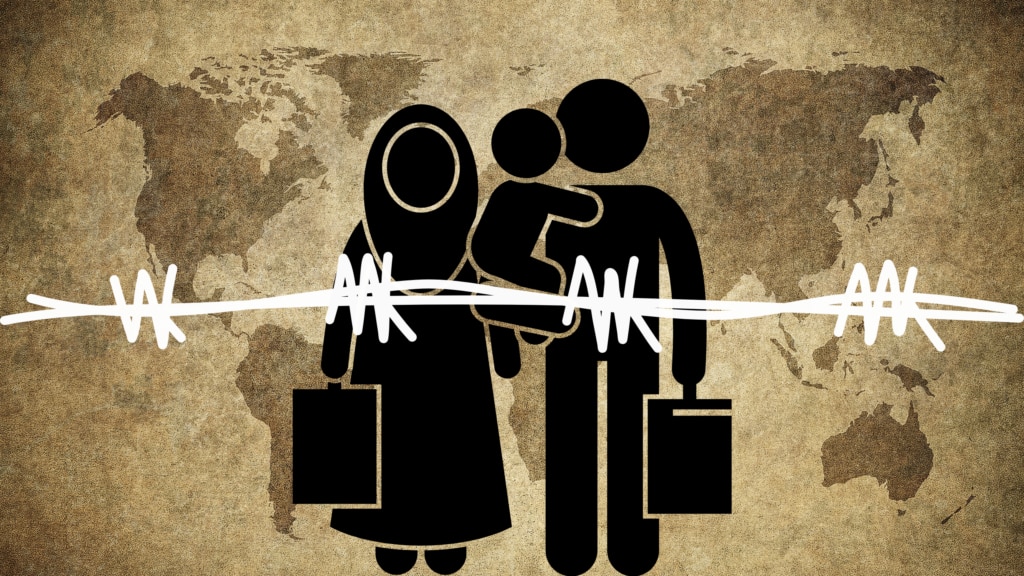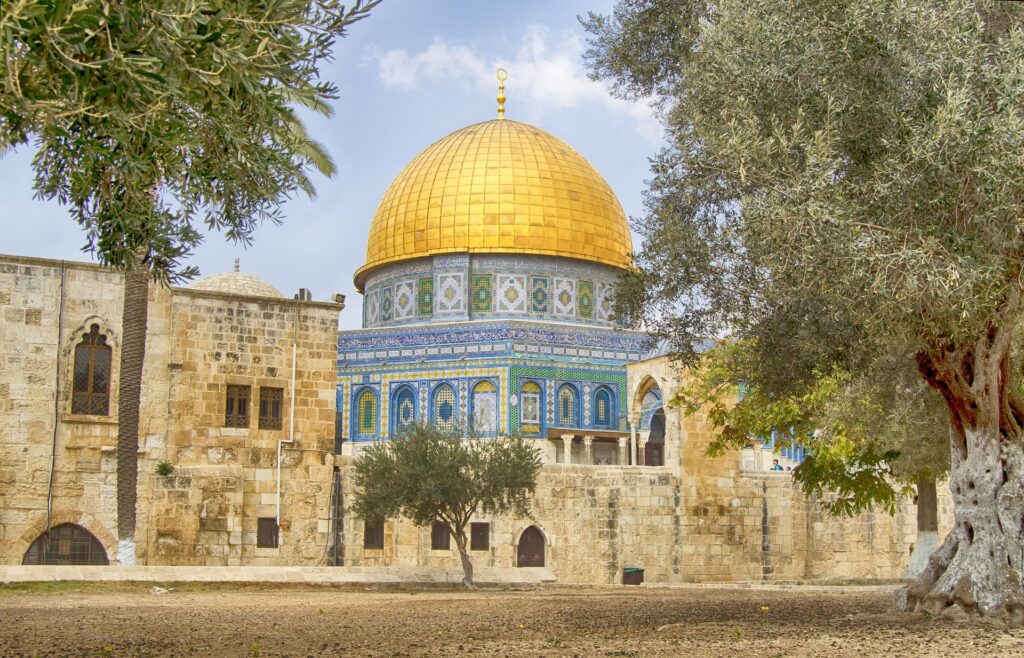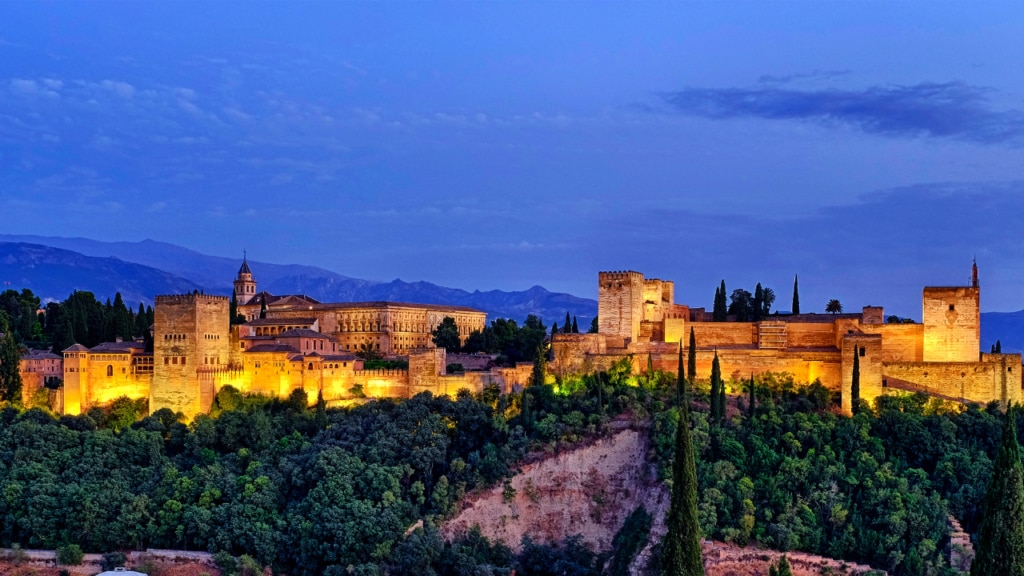Daniyal Mahmood Ahmad, Al Hakam
Immigration debates in the West often blame migrants for societal issues, with narratives of crime and job loss dominating headlines. Amid this, recently, figures like Elon Musk have highlighted immigrants’ contributions, sparking nationalist backlash. Islam, however, emphasises mutual responsibilities: hosts provide refuge, and migrants integrate and contribute.

The West & its immigration issue
Europe is committing suicide, with immigration as the weapon – a sentiment we’ve recently come across a lot more than before. Many X accounts with large followings, like visegrad24, exclaim this as a fact, and at the very least some large accounts like Elon Musk agree with this statement.
The blame for this attempted suicide of Europe is often placed on non-Europeans. The influx of migrants, whether they have arrived through legal or illegal means of immigration, is believed to be the cause of this downfall, since the media heavily reports on crimes committed by certain races and backgrounds more so than others. (“Race and Ethnic Representations of Lawbreakers and Victims in Crime News: A National Study of Television Coverage”, pmc.ncbi.nlm.nih.gov, 1 May 2010)
Lately, Elon Musk has been facing a lot of backlash for his opinion that highly skilled tech workers from India who settle in the US through the H-1B migration visa for foreign-born workers are a net positive addition to the country. In response, many right-wing leaning accounts have caused an uproar, claiming that born and bred Americans should be given priority. He went on to highlight the importance of immigrants and their contribution to American society.
Another factor is that for many native Europeans and Americans, finding out that an immigrant has committed a crime seems like a recurring theme, or they feel that their jobs are being taken by these “aliens.” Why must Europe and the US bear the burden of hosting and settling migrants from war-torn countries?
The answer might not be so simple, because the trail can lead to Western intervention and wars in these developing countries. However, what we can learn is what the Islamic perspective on migration is, and what the responsibilities of immigrants and their host countries ought to be.
Islamic teachings regarding hospitality of migrants
The first source of guidance for Muslims is the Holy Quran, in which Allah the Almighty states:
وَاِنۡ اَحَدٌ مِّنَ الۡمُشۡرِکِیۡنَ اسۡتَجَارَکَ فَاَجِرۡہُ حَتّٰی یَسۡمَعَ کَلٰمَ اللّٰہِ ثُمَّ اَبۡلِغۡہُ مَاۡمَنَہٗ ذٰلِکَ بِاَنَّہُمۡ قَوۡمٌ لَّا یَعۡلَمُوۡنَ
“And if anyone of the idolaters ask protection of thee, grant him protection so that he may hear the word of Allah; then convey him to his place of security. That is because they are a people who have no knowledge.” (Surah at-Taubah, Ch.9: V.7)
This verse makes it clear that Muslims have a responsibility to provide protection (which includes shelter and legal rights) to anyone who seeks it, even if they are a polytheist – this injunction is not exclusive to Muslims or theists.
The Prophet Muhammadsa similarly states:
مَنْ نَفَّسَ عَنْ مُسْلِمٍ كُرْبَةً مِنْ كُرَبِ الدُّنْيَا نَفَّسَ اللَّهُ عَنْهُ كُرْبَةً مِنْ كُرَبِ يَوْمِ الْقِيَامَةِ
“Whoever relieves a Muslim of a burden from the burdens of the world, Allah will relieve him of a burden from the burdens on the Day of Judgement.” (Jami‘ at-Tirmidhi, Kitab al-birr wa as-silah ‘an rasulillah, Bab ma ja’a fi as-satr ‘ala al-muslim, Hadith 1930)
In many instances throughout history, such refugees settled in Muslim lands and became permanent minorities; their treatment was also often carried out in line with Islamic injunctions. This provides us with the understanding that anyone who helps Muslims in their time of need will be rewarded for it, which is an important aspect for every Muslim migrant to remember in relation to their host country and accept that as a favour rather than taking it for granted.
Abyssinia: The first migration
The first example of any form of migration within Islamic sources is the migration to Abyssinia. In the early years of the nascent Muslim community, either in the year 7 or 9 before Hijra (613/615 CE), a group of Companionsra of the Holy Prophet Muhammadsa migrated to the Christian Kingdom of Aksum (parts of modern-day Ethiopia & Eritrea) to escape the persecution they were facing at the hands of the Quraysh at Mecca.
The King of Aksum, Najashi (Negus), a Christian king, gave refuge to these early migrants. Despite being visited by an envoy from the Quraysh who requested the return of these immigrants, Najashi refused in the following words: “No, by God, I will not surrender them. No people who have sought my protection, settled in my country, and chosen me rather than others shall be betrayed…” (Ibn Ishaq, Al-Sirah al-Nabawiyyah [English], 1998, pp. 146-151)
This shows that the practice of migration and finding refuge in other lands (when necessary) is part of Islamic tradition. The Negus provided an excellent example as to how those fleeing their homelands ought to be treated, but the obligations of migrants to their new countries are equally important.
However, before that, it would be beneficial to mention how Muslims historically dealt with immigrants.
Crusades

The Crusades – a series of military campaigns initiated by Christian Europe against the Muslim states centred in and around Palestine and the Levant – took place from 1095 to 1291 CE. These warlike conditions created instability and displaced many people from their homeland. (Barbara B Pemberton, The Islamic View of the Crusades and Why It Matters: Historical and Contemporary Perspectives, 2016, p. 4)
Many of these people, who were part of various faiths, became refugees and found sanctuary in great cities like Baghdad and Damascus, which, despite the Crusades, offered relative security and served as centres of culture and learning, attracting scholars and individuals seeking safety alike. (“Damascus: Administration and society”, britannica.com, 26 December 2024)
Mongol invasions
In the 13th century, Genghis Khan and his descendants swept across the Eurasian steppe, creating the largest contiguous land empire in the world. During these Mongol conquests, many Islamic lands were conquered, looted, and sometimes decimated, such as Samarkand, Bukhara, and even Baghdad. (Ata-Malik Juvayni, The History of the World Conqueror [Tarikh-i Jahangushay], Translated by John Andrew Boyle, 1958, Harvard University Press, Vol.1, pp. 97-123)
These invasions created a significant upheaval in the Muslim world, causing forced mass migrations and permanently changing the distribution of the world’s major religions. (Mohammad Iqbal, Impact of Mongol Invasion on the Muslim World and the Political, Economic and Social Ramifications, p. 6)
The response of the Islamic world – or at least the regions relatively unaffected by the invasions, which were able to offer sanctuary to these refugees – provides an excellent example of how a host country should treat them:
“No other civilization in premodern history experienced so much in-migration, especially of alien and disruptive peoples, or showed a greater ability to assimilate as well as to learn from outsiders. Nowhere has the capacity of a culture to redefine and incorporate the strange and the foreign been more evident.” (“Islamic world: Migration and renewal [1041-1405]”, britannica.com, 13 December 2024)
Ottoman Empire & the Sephardic Jews
In 1492 CE, the Alhambra Decree was issued by the joint Catholic Monarchs of Spain, Isabella I and Ferdinand II. This decree ordered the expulsion of all Jews from the land previously known as “al-Andalus” (modern-day Spain & Portugal). In response to this, in an act of great empathy, Sultan Bayezid II of the Ottoman Empire sent the Ottoman navy to save the Jews who were being expelled – a stark contrast to the current migrant boat issue, where the roles are reversed, but the host countries are not keen on accepting these refugees.
The Sultan went on to grant these Jews – who became known as Sephardic Jews – full Ottoman citizenship and also threatened anybody who treated them badly or refused them admission into the empire with death. (“Sultan Bayezid II Welcomes Jewish Refugees from Spain”, historyofinformation.com, 15 December 2024)
The treatment of these Jewish refugees by the Ottomans can be deduced from the following words of the Chief Rabbi of the Jewish Community of Edirne, Yitzhak Sarfati:
“I proclaim to you that Turkey is a land wherein nothing is lacking, and where, if you will, all shall yet be well with you. The way to the Holy Land lies open to you through Turkey. Is it not better for you to live under Moselems than under Christians?” (Elli Kohen, History of the Turkish Jews and Sephardim: Memories of a Past Golden Age, 2007, p. 155)
Muslim migrants: Functional members of society
The above are only a handful of examples of how Muslims treated refugees and immigrants well during various parts of their history. The other side of the coin is how Muslim migrants assimilated and benefited their host countries, which might not have been Muslim lands at all.
Arabs in East Africa (7th century onwards)
Almost immediately after the advent of Islam, within the first few decades, Arab Muslim traders set out to various parts of the world to engage in trade and commerce. East Africa, due to its proximity to the Arabian peninsula, was one of the first places these traders landed. In the 8th and 9th centuries, these traders, along with other Arab settlers, established flourishing city-states such as Zanzibar, Mombasa, and Kilwa.
In addition to these new cities, they contributed to East Africa in various ways, such as developing extensive trade networks connecting Africa with Arabia, India, and Southeast Asia. Their influence also extended to the cultural sphere, as the Swahili language, a blend of Bantu and Arabic, emerged as a lingua franca in the region, and is still spoken to this day. (“Trade and the Spread of Islam in Africa.”, metmuseum.org, October 2021)
Moors in Spain (711 – 1492 CE)
Many Muslim “Moors,” who were originally inhabitants of North Africa, settled in “al-Andalus” (modern-day Spain & Portugal) after the Umayyad conquest in 711 CE.
The contributions of these Muslims over the next few centuries were immense and varied widely. They built iconic architectural structures such as the Alhambra Palace in Granada and the Great Mosque of Cordoba. Significant advancements in science and medicine were also made in various fields, which are credited with influencing the European Renaissance centuries later. Even new agricultural irrigation techniques were introduced which enhanced agricultural productivity.
These are only a handful of the many contributions these Muslims made to European society. (“Islamic world: Consolidation and expansion, Indian ocean Islam”, britannica.com, 13 December 2024)

Muslim traders in Southeast Asia (7th century onward)
Southeast Asia was another part of the world to which Arab Muslim traders, as well as Indian Muslims, set their gaze. Throughout the centuries, they would visit and eventually settle in countries such as Malaysia, Indonesia, and the Philippines.
The Muslims integrated and assimilated with the local people, establishing trade networks and maritime routes connecting Southeast Asia to the rest of the Indian Ocean world. This resulted in the exchange of ideas, technologies, and cultural practices. (“Islam in Southeast Asia to c. 1800”, oxfordre.com, 26 March 2019)
Modern Muslim migrants
These examples aren’t merely limited to the past – modern-day examples can be found in abundance. One of these is the geologist Farouk al-Kasim, an Iraqi-born Muslim who migrated to Norway and made such significant contributions to the country that the question, according to the BBC, had to be asked: “Did one man from Iraq make Norway rich?” (“Did one man from Iraq make Norway rich?”, www.bbc.co.uk, 29 February 2024)
With a background in the petroleum industry in Iraq, upon arrival in Norway, he presented his services to the Ministry of Industry, from where he went on to play a pivotal role in shaping Norway’s oil industry by developing policies that ensured sustainable resource management and economic stability and kept the country the main beneficiary of this natural resource. (“The Iraqi who saved Norway from oil”, ft.com, 29 August 2009)
Professor Dr Abdu Salam, the world-renowned Pakistani physicist also lived in Europe as an immigrant, and achieved great success in his field by winning the Nobel prize in Physics in 1979 CE.
Hazrat Sir Chaudhry Muhammad Zafrulla Khanra is also an exemplary example of achieving success as an immigrant. After serving as the first foreign minister for the newly created state of Pakistan, he spent decades living in Europe where he served as president of the United Nations General Assembly (1960-1961 CE) and president of the International Court of Justice (1970-1973 CE).
All of these relatively modern-day examples are success stories of positive migration.
Hijra & Muakhaat
The greatest migration in the history of Islam is undoubtedly the migration of the early Muslim community, including the Prophet Muhammadsa, from Mecca to Medina. This migration is known as the “Hijra”, and its significance is so great that Hazrat Umarra marked the beginning of the Islamic lunar calendar in the year that Hijra took place.
After the Hijra, the Prophetsa established bonds of brotherhood (muakhaat) between the emigrants (muhajirun) from Mecca and helpers (ansar) from Medina. The benefit of this was that the emigrants who had left everything behind had a pillar of support to assist them in settling down and establishing themselves, whilst the helpers were given the responsibility to help these refugees who were escaping severe persecution in their hometown. This system worked immaculately to assimilate the new arrivals into Medina.
Abdur Rahmanra bin Auf: An example for all immigrants
Abdur Rahmanra bin Auf was an esteemed companion who also took part in this migration. He left behind all of his wealth and family in Mecca and arrived in Medina almost empty-handed. The Prophetsa established the bond of brotherhood between Abdur Rahmanra and Saadra bin ar-Rabi, one of the most affluent residents of Medina. Saadra offered Abdur Rahmanra half of his wealth and even offered to divorce one of his two wives so that Abdur Rahmanra could marry one of them.
However, rather than relying on anybody else and becoming dependent on them, Abdur Rahmanra bin Auf politely declined the offer and asked for directions to the marketplace. Being the successful trader that he was, he used his business acumen to build his own wealth and success in the markets, becoming one of the wealthiest citizens. (Sahih al-Bukhari, Kitab manaqib al-Ansar, Bab ikha’ al-nabiyy salla-Allahu alaihi wa sallam bayna al-Muhājirīn wa al-Ansar, Hadith 3780)
In addition to attaining wealth, he also contributed immensely to his community by aiding in financing military campaigns and supporting the poor, orphans, and widows. He didn’t merely benefit from the state, rather he generously utilised his wealth for the betterment of it.
Conclusion

The above examples, especially that of Abdur Rahmanra bin Auf, stand as a testament to what Muslims should strive for, whether they are migrants or hosts. Even according to worldly morals, the obligation lies upon the state to grant refuge and sanctuary to those who are struggling (“The 1951 Refugee Convention”, unhcr.org), and also upon the immigrants settling into these lands to be beneficial, self-sufficient citizens, wherever possible.
The West can learn lessons from the Islamic tradition on how to welcome and deal with immigration, whilst immigrants can learn how to integrate, assimilate, and benefit those societies as functional members and beneficial citizens, rather than becoming dependent on government handouts and benefits.
This is in line with the opinion of the head of the Ahmadiyya Muslim community, Hazrat Mirza Masroor Ahmadaa who acknowledges the potential security threats of mass immigration and highlights the responsibilities of countries that are receiving this influx of migrants. (“‘Our Goal and Objective should be Nothing Less than to Establish Peace in Every Village, Town or City of Every Nation In The World’– Hazrat Mirza Masroor Ahmad”, pressahmadiyya.com, 9 September 2018)

